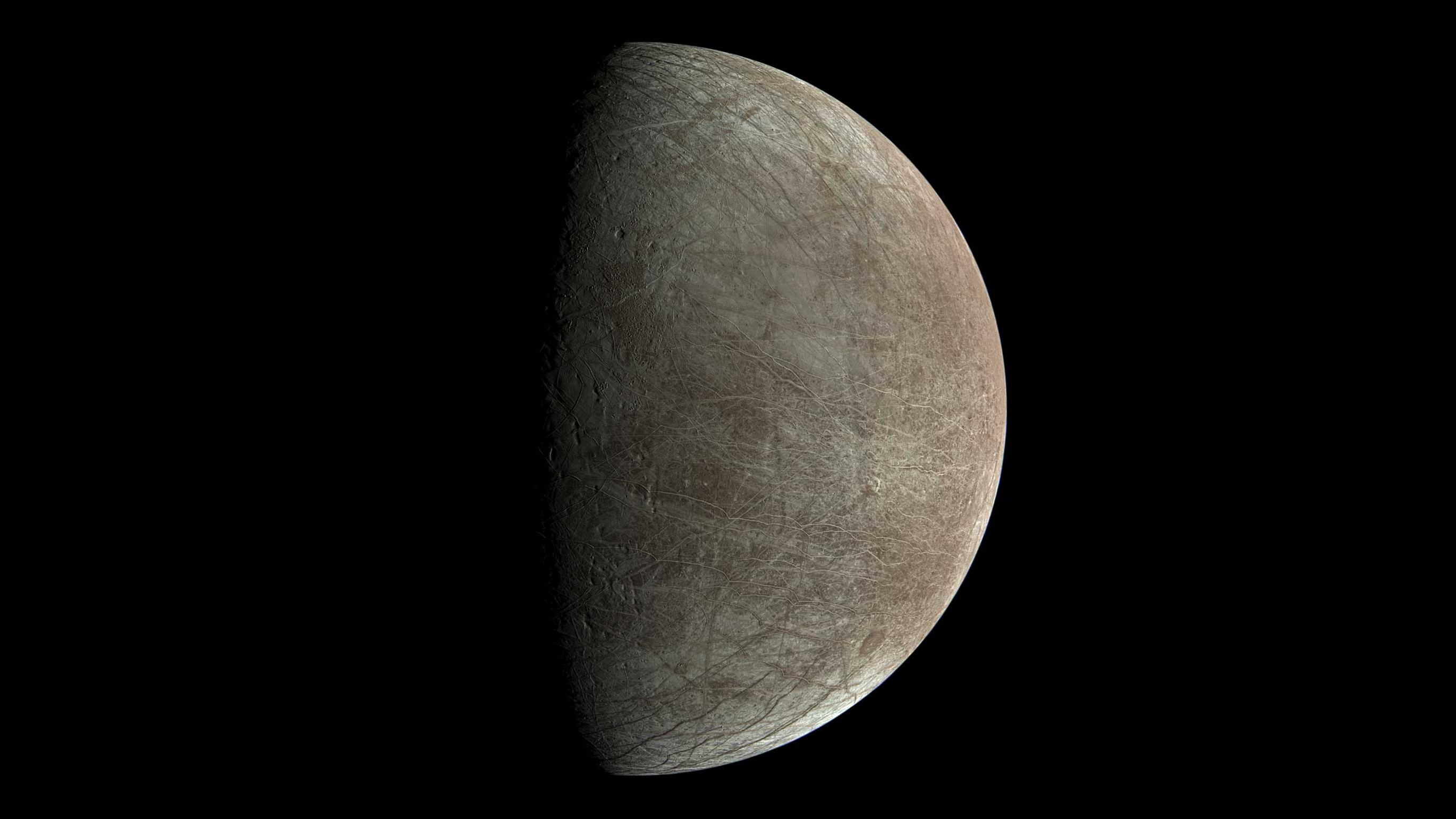Jupiter moon Europa's buried ocean may alter rotation of its icy shell
Turbulent, swirling currents in Europa's subsurface sea may influence the spin and geology of the moon's icy crust.

The vast, swirling ocean within Jupiter's moon Europa may be affecting the rotation of its icy crust, scientists say.
New supercomputer-driven modeling suggests that the waters of the internal, global ocean may be imparting forces on Europa's crust — possibly ones strong enough to affect the rotation speed of the moon's icy shell over time.
It is already known that Europa's exterior ice crust is probably free-floating, and also rotating at a different rate than the ocean and the moon's rocky core below. The new model is, however, the first to indicate that Europa's ocean currents play a part in the rotational speed of the moon's frozen outer layer.
Related: NASA's Juno spacecraft snaps its most detailed view of Jupiter's icy moon Europa
"Before this, it was known through laboratory experiments and modeling that heating and cooling of Europa's ocean may drive currents. Now our results highlight a coupling between the ocean and the rotation of the icy shell that was never previously considered," Hamish Hay, a researcher at the University of Oxford in England and lead author of a new study published in the journal JGR: Planets, said in a statement.
Most of the research and debate on the influences on Europa's crust have focused on the huge, external force of Jupiter's gravitational field. The new study considers how radioactive decay and tidal heating in Europa's interior and its overall rotation can drive currents, and impart turbulent drag on the inside of the icy shell.
"To me, it was completely unexpected that what happens in the ocean's circulation could be enough to affect the icy shell. That was a huge surprise," said study co-author Robert Pappalardo of NASA's Jet Propulsion Laboratory in Southern California.
Get the Space.com Newsletter
Breaking space news, the latest updates on rocket launches, skywatching events and more!
The model further hints that Europa's ocean currents could be responsible for some of the geology visible on the moon's frozen surface, which is etched with lines and fissures.
Pappalardo is the project scientist for NASA's Europa Clipper mission, which is scheduled to launch in 2024. The spacecraft aims to conduct dozens of flybys of the moon to provide new and greater insight into one of the most tantalizing planetary bodies in the solar system. The mission may, along with its main science objectives, be able to contribute to further understanding of the crust's rotation rate.
Meanwhile, the European Space Agency is preparing its flagship Jupiter Icy Moons Explorer (JUICE) spacecraft for launch from Kourou in French Guiana in April. That mission will target the Jovian satellites Europa, Ganymede and Callisto, with the aim of providing insights into their nature, evolution and possible subsurface oceans.
Follow us on Twitter @Spacedotcom and on Facebook.
Join our Space Forums to keep talking space on the latest missions, night sky and more! And if you have a news tip, correction or comment, let us know at: community@space.com.

Andrew is a freelance space journalist with a focus on reporting on China's rapidly growing space sector. He began writing for Space.com in 2019 and writes for SpaceNews, IEEE Spectrum, National Geographic, Sky & Telescope, New Scientist and others. Andrew first caught the space bug when, as a youngster, he saw Voyager images of other worlds in our solar system for the first time. Away from space, Andrew enjoys trail running in the forests of Finland. You can follow him on Twitter @AJ_FI.









